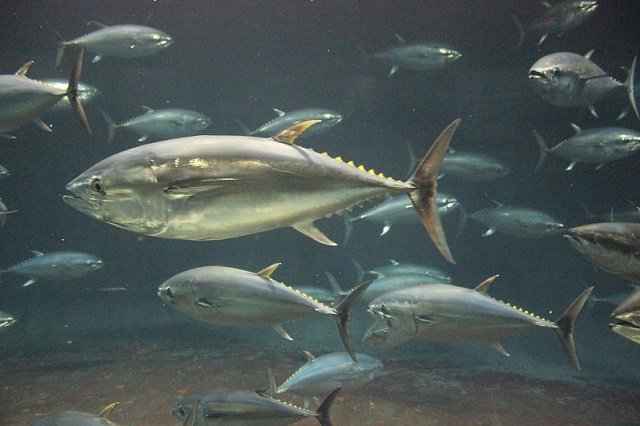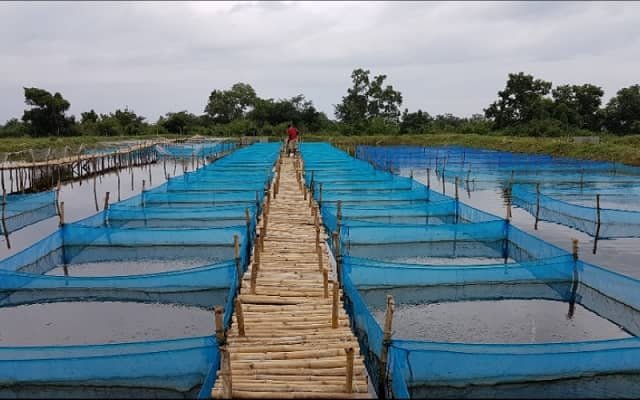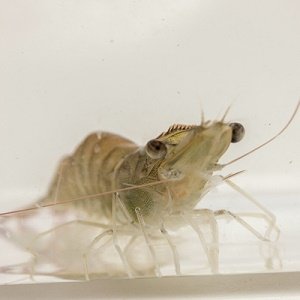
Salmon farming is a fundamental pillar of global aquaculture, satisfying a growing demand for healthy, high-quality protein. However, as the sector expands, so do questions about its sustainability and environmental footprint. A recent and exhaustive systematic review and meta-analysis, published in Reviews in Aquaculture, sheds light on these issues, precisely identifying critical points and comparing the performance of different production systems.
This study, led by Mausam Budhathoki of the University of Copenhagen, is not just another opinion; it is a rigorous synthesis of 31 Life Cycle Assessment (LCA) studies, offering a clear roadmap for producers, researchers, and managers to make informed decisions and advance towards truly sustainable salmon farming.
A closer look at the impact: What was measured and how?
To understand the true environmental impact, the researchers applied a “cradle-to-farm-gate” approach. This means they analyzed the entire process: from the production of raw materials for feed and energy, right up to the point where the live salmon is ready to leave the farm.
The analysis focused on four key environmental indicators:
- Global warming potential (GWP): Measures the carbon footprint, expressed in kg of CO₂ equivalent.
- Eutrophication potential (EP): Assesses the impact of excess nutrients (like nitrogen and phosphorus) in water bodies, measured in g of PO₄³⁻ equivalent.
- Acidification potential (AP): Related to emissions that cause acid rain, such as SO₂.
- Energy demand (ED): The total amount of energy (in MJ) required for production.
Feed: The undisputed protagonist of the environmental footprint
The study’s most compelling finding is the dominant role that feed production plays in the overall environmental impact of salmon farming. The data are clear:
- Carbon Footprint: Salmonid production generates an average of 2,570 kg of CO₂-eq per ton of live weight. Of this total, 65% is directly attributed to feed production.
- Acidification: Feed is responsible for 68% of the acidification potential.
- Energy Demand: The manufacturing of feeds consumes nearly half (48.6%) of all energy in the production cycle.
Interestingly, in the case of eutrophication, feed contributes to a lesser extent, accounting for 24% of the total. This suggests that the majority of the nutrient impact occurs directly at the farm, through excreta and uneaten feed.
These results underscore that feed efficiency, measured by the Feed Conversion Ratio (FCR), is the most influential variable. The study found that a higher FCR directly correlates with greater impacts on global warming, eutrophication, and acidification. The average FCR in the analyzed studies was 1.24±0.23, an already efficient figure but one with room for improvement.
System comparison: RAS, Flow-Through, and Net-Pens Under the Microscope
The study offers a valuable comparison between the main farming systems, revealing a complex landscape of environmental trade-offs.
Stay Always Informed
Join our communities to instantly receive the most important news, reports, and analysis from the aquaculture industry.
Recirculating Aquaculture Systems (RAS)
RAS are often seen as an advanced technological solution for minimizing impact on the local environment, and the study partly confirms this view.
- Key advantage: They significantly reduce eutrophication potential (-5.11 in effect size) and water use, thanks to their capacity to treat and recycle effluents.
- Main disadvantage: They have a notably higher Global Warming Potential (4.31 in effect size). This high carbon footprint is due to their high energy consumption for pumping, aeration, and water treatment.
Flow-through and Net-pen systems
These more traditional systems present an impact profile almost opposite to that of RAS.
- Key advantage: They exhibit a lower Global Warming Potential and a lower energy demand. The flow-through system, in particular, had the best performance in reducing the carbon footprint.
- Main disadvantage: They contribute significantly more to eutrophication, as nutrients are discharged directly into the environment with limited or no treatment.
It is crucial to highlight a cautionary note from the authors: although these trends were observed, the differences in carbon footprint and eutrophication among the various production systems were not statistically significant in the meta-analysis. This indicates that how a system is managed can be as important as the type of system itself.
Practical implications: How to move towards “Greener” salmon farming?
This study not only diagnoses the problem but also points toward solutions. The main conclusion is that no single “perfect” system exists, but there are clear strategies for improvement across all of them.
- Optimizing feed is the top priority: Reducing the FCR is the most effective action for lowering the overall environmental footprint. Furthermore, exploring alternative and sustainable ingredients to replace fishmeal and fish oil is fundamental, though the study warns that these alternatives also have their own impacts and must be carefully evaluated.
- Renewable energy for RAS: For RAS systems to reach their full sustainability potential, it is imperative to reduce their dependency on fossil fuel-based energy. Integration with renewable energy sources, such as solar or wind, could drastically mitigate their high carbon footprint.
- Nutrient management in open systems: For net-pens and flow-through systems, the great challenge remains waste management to minimize eutrophication. Innovations like precision feeding practices and future waste containment technologies will be key.
In short, this meta-analysis provides the salmon farming sector with a solid scientific basis to direct its sustainability efforts. The conversation is no longer about whether one system is “good” or “bad,” but about how to optimize each one, with an unavoidable focus on the efficiency and composition of feed—the Achilles’ heel of the salmon’s environmental footprint.
Contact
Mausam Budhathoki
Department of Food Science, University of Copenhagen
Frederiksberg C, Denmark
Email: mausam@food.ku.dk
Marianne Thomsen
Department of Food Science, University of Copenhagen
Frederiksberg C, Denmark
Email: mth@food.ku.dk
Reference (open access)
Budhathoki, M., Phuyal, S., Pandey, S., & Thomsen, M. (2025). Environmental Impacts of Salmonidae Farming: A Systematic Review and Meta Analysis of Life Cycle Assessment Studies. Reviews in Aquaculture, 17(4), e70069. https://doi.org/10.1111/raq.70069
Editor at the digital magazine AquaHoy. He holds a degree in Aquaculture Biology from the National University of Santa (UNS) and a Master’s degree in Science and Innovation Management from the Polytechnic University of Valencia, with postgraduate diplomas in Business Innovation and Innovation Management. He possesses extensive experience in the aquaculture and fisheries sector, having led the Fisheries Innovation Unit of the National Program for Innovation in Fisheries and Aquaculture (PNIPA). He has served as a senior consultant in technology watch, an innovation project formulator and advisor, and a lecturer at UNS. He is a member of the Peruvian College of Biologists and was recognized by the World Aquaculture Society (WAS) in 2016 for his contribution to aquaculture.




